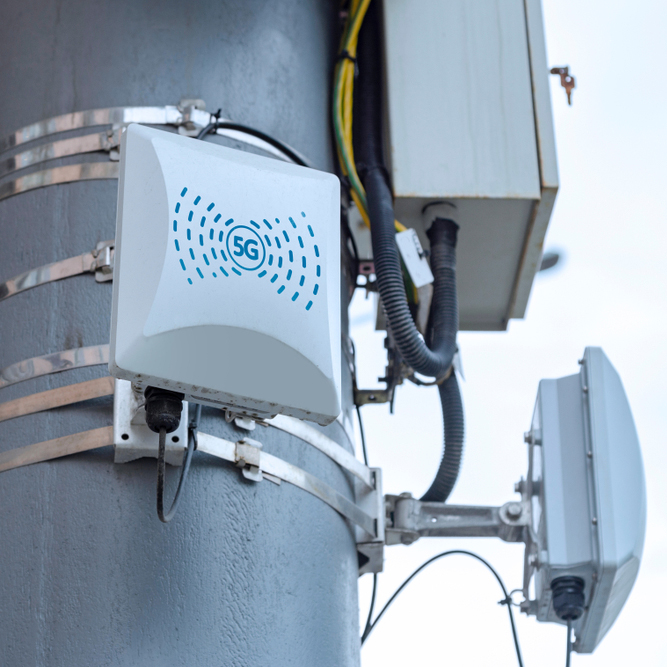
A ‘Private 5G Network’ (P5G) is a cellular network which has been built specifically for an individual organisation. Asset-intensive organisations with large physical sites can get significant speed improvements in data transfer from a P5G network, compared with alternative technologies such as wide-area wi-fi.
Private 5G Networks are better established in Japan than in Europe, due largely to the early technological lead and market dominance of NTT Docomo in the Japanese market. Multinational corporations such as Hitachi and Toyota are already using P5G networks to support a range of IoT (Internet of Things) and Edge devices at their manufacturing and operations sites. One advantage of the early adoption in Japan, is that the benefits of P5G are already clear, and the technology is now easily available to implement a P5G network here. (links open in new tabs)
How is a Private 5G Network deployed?
Organisations can deploy a P5G Network in one of two ways:
- Standalone Non-Public Networks (NPN)
- Public Network Integrated Non-Public Networks (Hybrid)
The Standalone NPN is a relatively straightforward model, which means that the network has been purpose-built for the specific use of the organisation. The public and private networks are separate and don’t share resources. It is not only mobile service providers that deploy this type of network – vendors and infrastructure companies complete this work as well. This type of installation will be of particular interest to high-security organisations such as defence contractors, as there is no physical connection between the P5G and the public network.
In a hybrid network, the private network shares resources with the public network. This has the advantage that service and connectivity on the private network can be maintained, even if there is damage to the private network infrastructure. For many industrial sites, this is an important consideration, as the network equipment on the site may be exposed to a range of hazards. Hybrid networks require the involvement of a mobile service provider, whereas NPN networks do not.
How Private 5G Networks can be useful in the context of EAM
P5G networks can help organisations with implementation and adoption of EAM systems at their sites. The speed of 5G means that the full functions of the EAM system can be available to staff anywhere on site, and provide organisations with additional agility and flexibility to access their EAM system, at the point of work.
This will enable technicians to use advanced techniques such as augmented reality (AR), or access live remote assistance, when they are troubleshooting or performing maintenance tasks, helping to achieve an increased first-time fix rate and generate cost savings.
A P5G network will can help you to implement some of the features available in Maximo Application Suite – for example, Maximo Monitor can take live data feeds from sensors on assets, giving you advance warning of potential problems, and helping you schedule maintenance more efficiently. Using P5G opens up the possibility to use battery or solar-powered, standalone sensors, which can be used on mobile assets, or for temporary monitoring.
Another MAS app, Maximo Visual Inspection, enables automated visual monitoring of assets to identify anomalies. In a high-throughput environment such as a manufacturing production line, this will generate large amounts of data, and require rapid responses from the server – a P5G network will be ideal to handle both of these requirements, without the expense and delay of implementing a wired network.
Read more about Private 5G Networks being used for improved Enterprise Asset Management here (links open in new tabs):

The Advantages of a Private 5G Network
Many industries could benefit from adopting P5G Networks on their sites. While a standalone network is ideal for a single site, a hybrid network can be expanded to cover multiple sites.
Utilities companies, for example, could use P5G networks for applications such as connected equipment on wind farms as part of smart grids. Mining organisations often have limited fixed connectivity for their underground operations, which makes a P5G network an attractive, easily installed option.
Further advantages of P5G Networks include:
- Improving data privacy
- Enabling businesses to replace expiring legacy networks, such as TETRA
- Achieving fast, stable connectivity
- Sidestepping the limitations of Wi-Fi
- Enabling rapid expansion and implementation of networks
For more information about transforming your organisation with Enterprise Asset Management solutions, contact us now on info@peluk.org
Contact us now for a demo or more information about Maximo® EAM solutions for your organisation.
Call us on +44(0)20 3356 9629 or use our contact form below.
Contact us now





